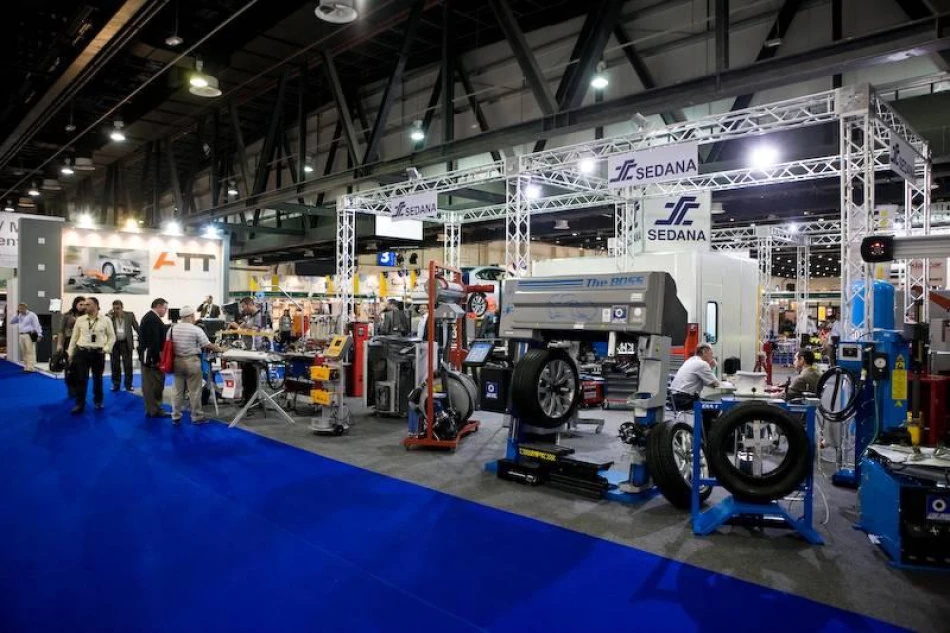
Counterfeit Auto Parts: A Hidden Threat to Drivers and Vehicles
Counterfeit Auto Parts Plague UAE Roads as Drivers Risk Safety for Savings
A dangerous trend is sweeping through the UAE's automotive sector as counterfeit car parts infiltrate the market, putting drivers and road users at serious risk. Despite stricter regulations and consumer awareness campaigns, fake components—particularly filters and brake systems—continue to flood repair shops, driven by price-conscious consumers and insufficient market oversight. The hidden costs of these substandard parts often exceed double the price of genuine components, while proper parts can reduce long-term maintenance costs by up to 80%.
The Scale of the Problem
The counterfeit parts crisis has reached alarming proportions across the UAE's automotive repair industry. Engine filters, air conditioning components, oils, fuel filters, coolant systems, and brake assemblies represent the most commonly counterfeited items flooding the market. These components, manufactured from low-grade materials, create a cascade of mechanical failures that can manifest suddenly during critical driving moments.
Muhammad Mahfouz, a vehicle maintenance engineer, reports encountering severe cases including turbo injection system failures caused by fake air filters, oil-water contamination from non-genuine oil coolers, and dangerous vibrations from substandard engine mounts. The technical complexity of modern vehicles means that one counterfeit component can trigger multiple system failures, creating repair bills that spiral beyond initial expectations.
Electric Vehicles: A Different Challenge
Electric vehicle owners face a more limited but still concerning exposure to counterfeit parts. Engineer Saif Al Hammadi, founder of EV GATE electric vehicle service center, explains that sophisticated electronic protection systems prevent non-genuine components from being installed in critical systems like batteries and motors. However, exterior components remain vulnerable to counterfeiting, similar to traditional vehicles.
This built-in protection represents a significant advantage for EV adoption, as manufacturers have learned from decades of counterfeit part problems in conventional vehicles. The smart systems simply refuse to recognize unauthorized components, forcing repairs to use genuine parts for core functions.
Economic Drivers Behind the Trade
Industry expert Ibrahim Abu Zikra identifies several factors fueling the counterfeit parts market. Price sensitivity remains the primary driver, with fake components often costing significantly less upfront than genuine alternatives. Limited availability of authentic parts through authorized dealers creates supply gaps that counterfeit suppliers eagerly fill.
Consumer awareness deficits compound the problem, as many drivers cannot distinguish between genuine and fake components without technical expertise. Some buyers consciously choose counterfeits as temporary solutions due to financial constraints or plans to sell their vehicles soon—a shortsighted approach that can have catastrophic consequences, particularly with brake system components.
The True Cost Analysis
The economics of counterfeit parts present a false economy that traps consumers in expensive repair cycles. Fake components typically last less than one year compared to five years for genuine parts. The cumulative replacement costs, combined with damage to related systems, often exceed 200% of genuine part prices.
This pattern mirrors similar challenges faced in other automotive markets globally, from Southeast Asia to Latin America, where price-sensitive consumers initially embrace cheaper alternatives only to face higher long-term costs. The UAE's experience reflects a broader global struggle to balance automotive affordability with safety and reliability.
Legal Framework and Consumer Protection
Legal consultant Muhammad Abu Shaaban emphasizes that UAE legislation takes counterfeit parts seriously, treating them as trademark violations that expose users to legal risks. The law provides consumer recourse, allowing parts replacement or refunds when buyers unknowingly purchase counterfeit components.
Enforcement includes financial penalties and imprisonment for manufacturers and sellers of fake parts that threaten public safety. This legal framework positions the UAE ahead of many regional markets in consumer protection, though enforcement challenges remain significant given the sophisticated nature of modern counterfeiting operations.
Industry Response and Prevention
Automotive professionals recommend several consumer protection strategies. Verification of part identification numbers against original components provides the first line of defense. Demanding official invoices and warranty documentation protects legal and financial rights while creating paper trails for potential legal action.
The industry's shift toward digital verification systems, QR codes, and blockchain authentication represents the next evolution in anti-counterfeiting efforts. These technologies, already deployed in luxury automotive markets, are gradually expanding to mainstream vehicle servicing.
Market Implications and Future Outlook
The counterfeit parts crisis reflects broader challenges in the UAE's rapidly expanding automotive sector. As vehicle ownership grows and the market matures, the tension between affordability and quality will likely intensify. The government's push toward electric vehicle adoption may inadvertently help address the problem, as EVs' integrated protection systems make counterfeiting more technically challenging.
For investors and industry stakeholders, the counterfeit parts problem represents both risk and opportunity. Genuine parts suppliers with strong authentication systems and consumer education programs are likely to gain market share as awareness grows. Meanwhile, the regulatory environment continues tightening, potentially creating barriers for smaller, less compliant market participants.
The UAE's experience serves as a cautionary tale for other Gulf markets undergoing similar automotive expansion. Early intervention through regulation, consumer education, and industry cooperation proves more effective than reactive measures after counterfeit networks become entrenched.
Most Viewed News

 Omar Rahman
Omar Rahman






